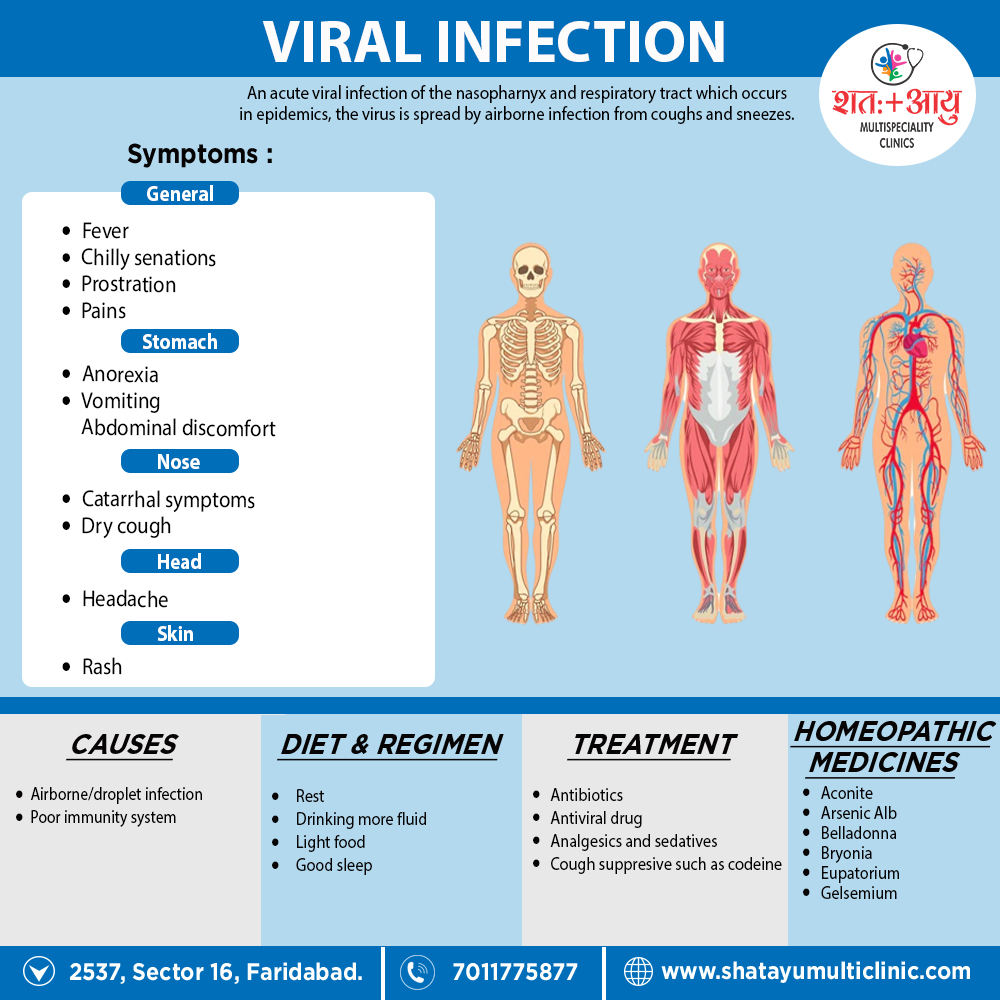Definition of Viral Infection (Influenza)
An acute Viral Infection of the nasopharynx and respiratory tract which occurs in epidemics. The virus is spread by airborne infection from coughs and sneezes.

An acute Viral Infection of the nasopharynx and respiratory tract which occurs in epidemics. The virus is spread by airborne infection from coughs and sneezes.
About 30–50% of acute lower respiratory tract infections are viral in origin; of these influenza and respiratory syncytial virus (RSV) are associated with maximum disease burden.
Intubation period i.e.: 1 to 3 Days
Factors that may increase your risk of developing the flu or its complications include i.e.:
There are three types A, B, C virus.
Clinical features of influenza A and B illness.
Onset – Sudden with fever, chilly sensations, and prostration, catarrhal symptoms, headache, pains and dry cough. Sometimes erythematous rash.
(i) Fulminating rapidly fatal form in which pneumonia is present from the onset.
(ii) Progressive form in which on the 2nd or 4th day signs of pneumonia begin to develop with copious fine crepitations usually basal. The sputum may be pinkish, frothy and copious, or tenacious mucus of several hues.
(iii) Late form in which often after apparent recovery from the primary influenza, pneumonia suddenly supervenes on the 4th to 10th day after the onset.
Homeopathy treats the person as a whole. It means that homeopathic treatment focuses on the patient as a person, as well as his pathological condition. The homeopathic medicines selected after a full individualizing examination and case-analysis.
which includes
A miasmatic tendency (predisposition/susceptibility) also often taken into account for the treatment of chronic conditions.
A homeopathy doctor tries to treat more than just the presenting symptoms. The focus is usually on what caused the disease condition? Why ‘this patient’ is sick ‘this way’?.
The disease diagnosis is important but in homeopathy, the cause of disease not just probed to the level of bacteria and viruses. Other factors like mental, emotional and physical stress that could predispose a person to illness also looked for. No a days, even modern medicine also considers a large number of diseases as psychosomatic. The correct homeopathy remedy tries to correct this disease predisposition.
The focus is not on curing the disease but to cure the person who is sick, to restore the health. If a disease pathology not very advanced, homeopathy remedies do give a hope for cure but even in incurable cases, the quality of life can greatly improved with homeopathic medicines.
The homeopathic remedies (medicines) given below indicate the therapeutic affinity but this is not a complete and definite guide to the homeopathy treatment of this condition. The symptoms listed against each homeopathic remedy may not be directly related to this disease because in homeopathy general symptoms and constitutional indications also taken into account for selecting a remedy.
An acute Viral Infection of the nasopharynx and respiratory tract which occurs in epidemics. The virus is spread by airborne infection from coughs and sneezes.
References: